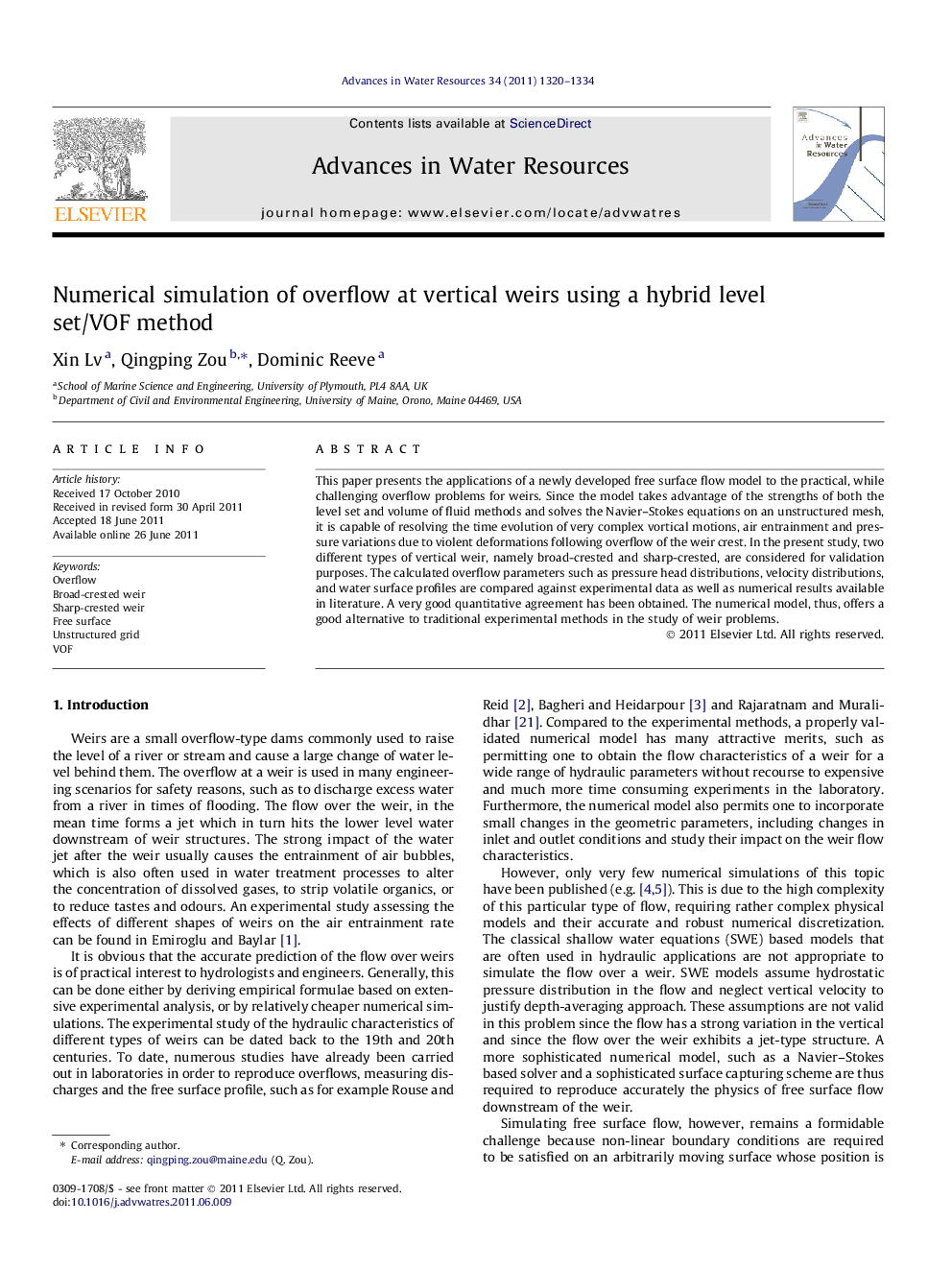| Article ID | Journal | Published Year | Pages | File Type |
|---|---|---|---|---|
| 4526048 | Advances in Water Resources | 2011 | 15 Pages |
This paper presents the applications of a newly developed free surface flow model to the practical, while challenging overflow problems for weirs. Since the model takes advantage of the strengths of both the level set and volume of fluid methods and solves the Navier–Stokes equations on an unstructured mesh, it is capable of resolving the time evolution of very complex vortical motions, air entrainment and pressure variations due to violent deformations following overflow of the weir crest. In the present study, two different types of vertical weir, namely broad-crested and sharp-crested, are considered for validation purposes. The calculated overflow parameters such as pressure head distributions, velocity distributions, and water surface profiles are compared against experimental data as well as numerical results available in literature. A very good quantitative agreement has been obtained. The numerical model, thus, offers a good alternative to traditional experimental methods in the study of weir problems.
► A hybrid level set/VOF free surface model improves surface capturing capability. ► Predicted overflow parameters are in excellent agreement with experimental data. ► Wave breaking and surge after water overtops weir is well captured by the model. ► Complex vortical motions and air entrapment behind the weir are revealed by the model. ► Pressure variations occur due to violent collision and wave breaking after the weir.
